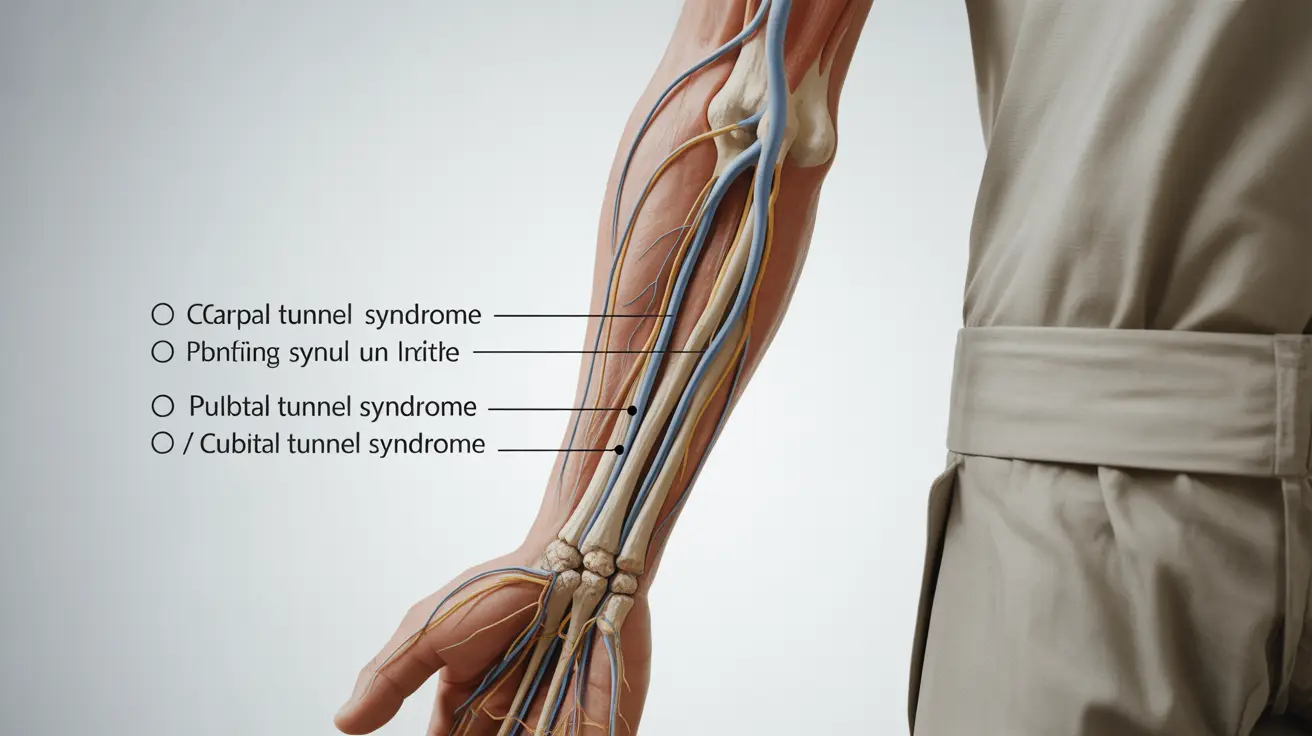When experiencing discomfort in both your wrist and elbow, you might wonder about the relationship between carpal tunnel syndrome and elbow pain. While carpal tunnel syndrome primarily affects the wrist and hand, its symptoms can sometimes extend to the elbow, causing confusion and concern for many people.
Understanding the connection between carpal tunnel syndrome and elbow pain is crucial for proper diagnosis and treatment. Let's explore how these conditions are related and what you can do to find relief.
Understanding Carpal Tunnel Syndrome and Its Impact
Carpal tunnel syndrome occurs when the median nerve, which runs through a narrow passage in your wrist called the carpal tunnel, becomes compressed. This compression typically causes symptoms in the hand and wrist, but the effects can radiate up the arm.
Primary Symptoms and Their Reach
- Numbness and tingling in the thumb, index, and middle fingers
- Weakness in the hand and fingers
- Pain that can travel up the forearm
- Burning sensations in the palm and fingers
- Difficulty gripping objects
The Connection Between Carpal Tunnel and Elbow Pain
While carpal tunnel syndrome doesn't directly cause elbow pain, the condition can lead to changes in how you use your arm, which may result in secondary elbow discomfort. People often modify their movements to compensate for wrist pain, potentially straining the elbow joint and surrounding muscles.
Distinguishing Between Different Conditions
- Cubital tunnel syndrome (compression of the ulnar nerve at the elbow)
- Tennis elbow (lateral epicondylitis)
- Golfer's elbow (medial epicondylitis)
- Referred pain from neck issues
Treatment Options and Management Strategies
Managing carpal tunnel syndrome and associated elbow pain typically involves a comprehensive approach:
Conservative Treatment Methods
- Wrist splinting, especially during sleep
- Anti-inflammatory medications
- Physical therapy exercises
- Ergonomic modifications at work and home
- Regular stretching and strengthening exercises
- Ice or heat therapy as needed
Professional Medical Interventions
If conservative treatments don't provide relief, your healthcare provider might recommend:
- Corticosteroid injections
- Ultrasound therapy
- Advanced physical therapy
- Surgical intervention in severe cases
Prevention and Lifestyle Modifications
Preventing carpal tunnel syndrome and related elbow pain involves making several lifestyle adjustments:
- Maintaining proper posture while working
- Taking regular breaks during repetitive activities
- Using ergonomic equipment and tools
- Performing regular stretching exercises
- Strengthening the muscles in your hands, wrists, and arms
Frequently Asked Questions
What are the symptoms of carpal tunnel syndrome that can affect the elbow? While carpal tunnel syndrome primarily affects the wrist and hand, symptoms can radiate up the forearm to the elbow, including pain, tingling, and discomfort along the nerve pathway.
How is carpal tunnel syndrome treated, and what are the most effective nonsurgical options? The most effective nonsurgical treatments include wrist splinting, physical therapy, anti-inflammatory medications, and lifestyle modifications. Ergonomic adjustments and regular stretching exercises also play crucial roles in management.
Can carpal tunnel syndrome cause pain in both the wrist and elbow simultaneously? Yes, while the primary symptoms occur in the wrist and hand, compensatory movements and nerve irritation can lead to simultaneous pain in both the wrist and elbow regions.
What's the difference between cubital tunnel syndrome and carpal tunnel syndrome in terms of symptoms and treatment? Cubital tunnel syndrome affects the ulnar nerve at the elbow, causing numbness and tingling in the ring and small fingers, while carpal tunnel syndrome affects the median nerve at the wrist, impacting the thumb, index, and middle fingers. Treatment approaches are similar but target different areas.
How can you reduce the risk of elbow pain associated with carpal tunnel syndrome through lifestyle changes? You can reduce risk through proper ergonomics, regular breaks from repetitive activities, strengthening exercises, maintaining good posture, and using appropriate tools and equipment designed to minimize strain.




